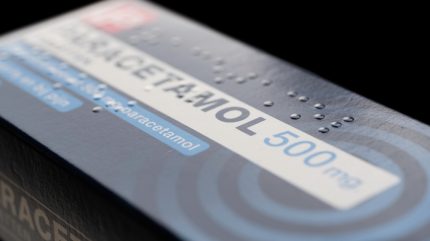
Packaging plays a crucial role in our daily lives, offering convenience, protection, and branding. However, for individuals with sensory impairments, packaging can often be a source of frustration and exclusion.
Many everyday products come in containers that are difficult to identify, open, or read for those with visual impairments, hearing loss, or other sensory challenges. By designing packaging with accessibility in mind, businesses can enhance user experience, improve safety, and demonstrate inclusivity.
This article explores how packaging can be optimised for blind and visually impaired consumers, the role of tactile markers and smart labels in accessibility, and best practices for inclusive design.
Designing packaging for blind and visually impaired consumers
One of the main challenges for blind and visually impaired consumers is distinguishing between products, particularly when shopping independently.
Traditional packaging often relies on visual elements such as printed text, colour coding, and branding, which offer little assistance to those who cannot rely on sight.
To address this, manufacturers can incorporate features such as raised lettering, embossed symbols, and Braille to provide essential information. Braille labels, while beneficial, should be accompanied by other accessible features since not all visually impaired individuals are fluent in Braille.

US Tariffs are shifting - will you react or anticipate?
Don’t let policy changes catch you off guard. Stay proactive with real-time data and expert analysis.
By GlobalDataHigh-contrast colours and large, clear fonts also help those with partial sight by making text easier to read.
Easy-open mechanisms are another essential aspect of inclusive packaging. Many products, particularly food and medicine, come in packaging that is difficult to open without clear tactile indicators.
Designing pull-tabs, notches, and textured grips allows visually impaired consumers to interact with packaging more independently and safely.
The role of tactile markers and smart labels in accessibility
Tactile markers are an effective way to make packaging more accessible. These markers, such as embossed symbols or uniquely textured surfaces, allow blind and visually impaired consumers to identify products through touch.
For example, some companies have introduced standardised tactile markings to differentiate between shampoo and conditioner bottles, ensuring they can be easily identified without visual assistance.
Another emerging innovation in accessible packaging is the use of smart labels. These can include QR codes, NFC (Near Field Communication) technology, or RFID (Radio Frequency Identification) tags that provide audio descriptions when scanned with a smartphone.
Apps such as Seeing AI and Be My Eyes allow visually impaired consumers to receive spoken product details, including ingredients, usage instructions, and expiration dates.
These digital solutions help bridge the gap between traditional packaging and the needs of blind and visually impaired consumers, ensuring they have access to the same information as sighted individuals.
Best practices for inclusive packaging design
Creating packaging that is accessible to individuals with sensory impairments is not just about adding features—it requires a holistic approach to design. Businesses should consider universal design principles, which benefit all users, including those with disabilities.
One key practice is conducting user testing with individuals who have sensory impairments. Gathering direct feedback ensures that packaging solutions meet real-world needs.
Inclusive design should also focus on standardisation, as consistency in packaging formats makes it easier for users to navigate different products without having to learn new systems.
In addition to tactile and smart technology solutions, companies can adopt clearer labelling strategies. Using simple language, pictograms, and high-contrast colour schemes helps improve readability for those with low vision.
Sustainability is another factor to consider. Many accessible packaging solutions can be integrated with environmentally friendly materials, ensuring that accessibility does not come at the cost of sustainability. Innovations such as biodegradable embossed labels and recyclable smart tags help create a more inclusive and eco-conscious industry.
The takeaway
Accessible packaging is an essential step towards inclusivity and equality for individuals with sensory impairments.
By implementing tactile markers, smart labels, and thoughtful design choices, manufacturers can make everyday products more user-friendly for blind and visually impaired consumers.
As technology advances, the potential for more innovative and inclusive packaging solutions will continue to grow, ensuring that accessibility becomes an integral part of product design rather than an afterthought.
Brands that prioritise accessibility will not only benefit their consumers but also enhance their reputation, ensuring a more inclusive shopping experience for all.



